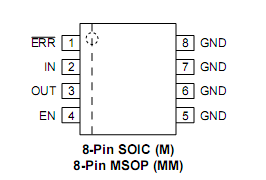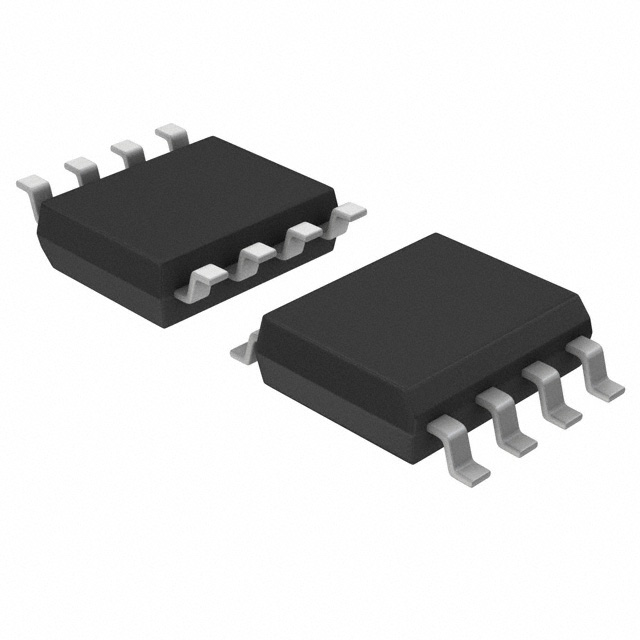Features: • Ultra-low quiescent current (I Q = 20 µ A @I O = 100 µ A)
• Wide input range:2.3V to 30V
• Low dropout: 230mV @50mA; 300mV @150mA
• Fixed 2.5V, 3.0V, 3.3V, 5.0V, and Adjustable outputs
• ± 1.0% initial output accuracy
• Stable with ceramic or tantalum output capacitor
• Load dump protection: 20V to +60V input transient survivability
• Logic compatible enable input
• Low output flag indicator
• Overcurrent protection
• Thermal shutdown
• Reverse-leakage protection
• Reverse-battery protection
• High-power SOP-8 and MSOP-8Application• Keep-alive supply in notebook and portable personal computers
• Logic supply from high-voltage batteries
• Automotive electronics
• Battery-powered systemsPinout

SpecificationsSupply Voltage (V IN ), Note 3 ........................... 20V to +60V
Power Dissipation (P D ), Note 4 .....................Internally Limited
Junction Temperature (T J )...........................................+150 ° C
Storage Temperature (T S )....................... 65 ° C to +150°C
Lead Temperature (soldering, 5 sec.).............................260 ° C
ESD Rating, Note 5DescriptionThe MIC5236 is a low quiescent current, µ Cap low-dropout regulator. With a maximum operating input voltage of 30V and a quiescent current of 20 µ A, it is ideal for supplying keep- alive power in systems with high-voltage batteries. Capable of 150mA output, the MIC5236 has a dropout voltage of only 300mV. It can also survive an input transient of 20V to +60V.
As a µ Cap LDO, the MIC5236 is stable with either a ceramic or a tantalum output capacitor. It only requires a 1.0 µ F output capacitor for stability. The MIC5236 includes a logic compatible enable input and an undervoltage error flag indicator. Other features of the MIC5236 include thermal shutdown, current-limit, overvoltage shutdown, load-dump protection, reverse leakage protections, and reverse battery protection.
Available in the thermally enhanced SOP-8 and MSOP-8, the MIC5236 comes in fixed 2.5V, 3.0V, 3.3V, 5.0V, and adjustable voltages. For other output voltages, contact Micrel.

 MIC5236 Data Sheet
MIC5236 Data Sheet









